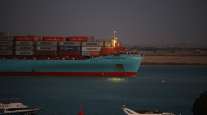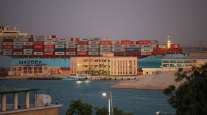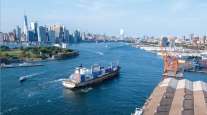Ocean Freight Industry Stabilized in 2017, Freightos Says
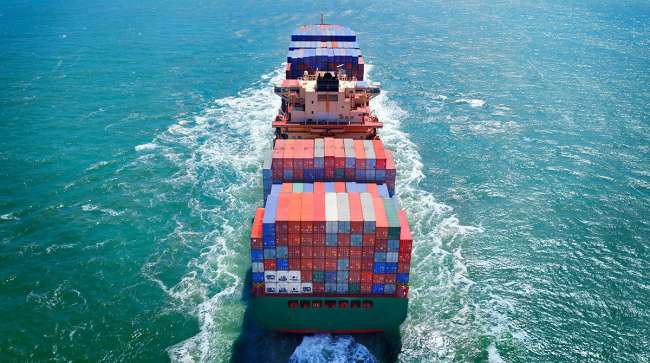
The ocean freight industry stabilized in 2017, with rates remaining relatively steady after the turmoil of 2016 from the bankruptcy of Hanjin Shipping Co., according to a report from online freight marketplace Freightos.
Spot market rates generally trended downward throughout the year, starting with a high of $2,100 per industry standard 40-foot-equivalent unit on the China to West Coast lane and $3,549 on the China to East Coast lane in February, according to Freightos. But as the jolt of the Hanjin supply chain disruption became a distant memory, prices began tumbling again.
Last December, rates for China to the West Coast dipped to $962 and those for China to the East Coast fell to $1,669 per FEU. Rates climbed in late December as shippers turned their attention to the 2018 Chinese New Year on Feb. 16.
“The post-Chinese New Year season is a good indicator in that respect; while 2016 saw rates bottoming out, 2017 saw a slightly more buoyant market. Underlying capacity excess issues still remain and carriers are working hard to address those, typically by delaying capacity deliveries or leveraging technology,” said Eytan Buchman, Freightos vice president of marketing.
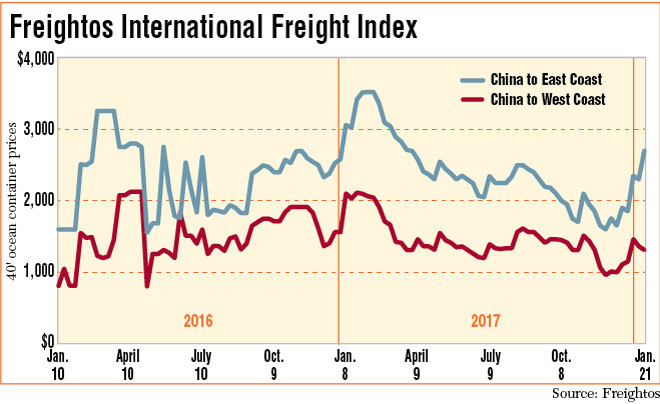
The steamship lines also dug out in 2017 after losing billions in 2016. For example, Japanese carrier Mitsui O.S.K. Lines lost $1.4 billion in 2016, but when the final 2017 financial report is released, industry analysts expect the ocean carrier to earn $5 million. Taiwanese carrier Evergreen Marine Corp. lost a combined $343 million in 2015 and 2016 but is expected to make $242.1 million in profits after it releases fourth-quarter and full-year results.
For the freight forwarders, one size doesn’t fit all in spot rates.
Freightos found a 58% spread in the price quotes on the same door move when using a “mystery shopper.” Door moves refer to a rate that covers the entire supply chain from origin to destination, including the drayage.
Buchman said Freightos will log onto websites to get instant quotes on the same route using a fake company name, then compare the price spread from the various freight forwarders.

“It was higher than we expected this year and it was pretty surprising,” Buchman said. “On one-off spot quotes, there is often a very large spread, though, because sometimes the forwarder will pick the most efficient routes or there will be an error in the quote, which is not uncommon in a process that’s often manual.”
Freight forwarders without guaranteed space on containerships faced a swing in prices in 2017.
In the week ending Jan. 29, the final surge before Chinese New Year, the median price was $2,095 out of Asia, but the highest prices spiked to $4,066, according to Freightos.
The week of Nov. 5, the last-minute restocking for Black Friday, China to West Coast prices peaked at $1,512 and China to East Coast was $2,119.
Airfreight also had a good year in 2017.
Freightos found that airfreight took a larger slice of the market than in previous years. In January 2015, airplanes moved 53% of the less-than-containerload shipments and steamship lines moved the remaining 47%. In 2017, Freightos found the market share shifted to 65% airfreight and 35% steamship lines.
“Shippers are clearly becoming more dependent upon airfreight because there was much less fluctuation in this ratio in 2017 than for the previous two years. These factors are indicators of the emerging role that e-commerce is playing in freight — both directly and because its brick-and-mortar competitors are turning toward more responsive supply chains to stay competitive,” the report found.


